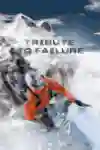
Success isn’t always about being on top, just ask Nicolas Hojac

1 h 6 min
Tribute to Failure
Four Swiss alpinists attempt the first ascent of a new route on the 6,543m Shivling in India.
What goes through your mind when you hear the word Shivling?
I'm thinking of a beautiful mountain, but also a sacred mountain - the name refers to the Hindu deity Shiva. Of course, I'm also thinking of the south face, which is still waiting for a first ascent. For me, this mountain is the perfect goal, but I have to reckon with others getting ahead of me. I would wholeheartedly give it to them. But, of course, it would bother me a little, too.
So no further attempt is planned?
Certainly not this year or next. After that, we'll see. I already have quite a few projects in the pipeline, and you can't just do an expedition like the Shivling on the side. On the other hand, we have already done so much planning work that we could do it exactly as it is.
The film features you talking about "difficult decisions" – which one was the most difficult?
Decisions like when we decided to turn back were made quickly, unanimously and without complications. After all, it's a matter of life and death. We knew that rescue was never to be expected, and that's why we always played defensively. From my point of view, decisions about strategy, material, route, schedule, etc., were more difficult to make because there is not only one right decision in such matters.
Is it really like they say – that the journey is more important than the goal?
Definitely for me. When it comes to mountaineering, it's not like the last step on the summit is difficult, and you're successful when you've taken that last step. Such an ascent, and of course a first ascent in particular, is a very large number of small successes. And it's not like we made a big mistake - high-altitude pulmonary oedema is sometimes just bad luck.
The Swiss climber Ueli Steck once said, “Every defeat takes you one step further” – is that right?
That's a truism in top-class sports. Victories and successes are often simply discarded. Defeats and failures are analysed more thoroughly. As a result, you usually learn more from it.
What does an expedition like this do to friendships?
There's no question: it welds you together. We all know what's going on in each other's minds. I've also had altitude sickness, so I knew exactly how Andi felt, physically and mentally. It's true that we mountaineers tend to be alpha animals. But we've all been around long enough to know that we have to work as a team.










